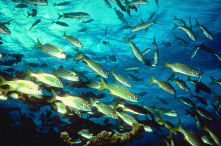Description
IRS Tax Audit Manual for the Alaskan Commercial Fishing : Catcher Vessels, Part I
Don’t Be Caught In The Net Of An Internal Revenue Service Audit! The IRS MANUAL written specifically for Internal Revenue Service Audit Agents to use while conducting audits of the Alaskan Commercial Fishing Industry – Catcher Vessels. This manual was created as an aid to compliance and enforcement strategies involving the Alaskan commercial fishing industry. Although this manual is specifically structured around the Alaskan commercial fishing industry and catcher vessels, it may be used as a broad outline for commercial fishing efforts in any region. Tenders, processors, and brokers are addressed in Part II.
Would you like to have INSTANT and UNLIMITED ACCESS to this incredible manual?
Download your copy now! This Is The ACTUAL Manual Used To Train IRS Audit Agents in the Alaskan Commercial Fishing Industry. The commercial fishing industry is a major contributor to the Alaskan economy. The fishing industry supports one-sixth of the state’s economy and employs 40,000 of its residents – more than any other of the state’s basic industries. After oil, commercial fishing produces more wealth in Alaska than any other industry. There are more than 150 different fisheries in Alaskan waters.
Economics aside, commercial fishing in Alaska is considered one of he most dangerous professions in the United States. During the 5 year period 1987 through 1992, 216 people died while commercial fishing in Alaska and over 256 vessels were lost. Commercial fishermen perish at an annual rate that is 25 times higher than the national average for on-the-job fatalities. Of the 35 that died in 1992, 33 were swept overboard into near freezing water and were overcome by the paralyzing cold. Of those who drowned, 87 percent were not wearing the flotation device required by law. It is these dangers that you should be worried about, not an IRS tax audit!
NEVER AGAIN EXPERIENCE THE FEAR ASSOCIATED WITH AN AUDIT BY THE INTERNAL REVENUE SERVICE!
A Limited Resource – The IRS Knows-
With the implementation of the 200-mile exclusive economic zone which “Americanized” Alaskan fisheries, the 1980’s saw over-capitalization in the industry. Too many fishers and too much gear compete for the limited amount of seafood available. Annual catch quotas for different species of offshore fish are scooped up in shorter and shorter periods each year.
Can You Afford NOT TO KNOW What Else The IRS Tells Its Auditors?
Tax Reporting Requirements
Annually, shore-side processors are required to file an Alaska Fisheries Business Tax Return (Form 04-574) with the State of Alaska. The return reports the value of seafood purchased, as represented by fish tickets issued to fishers. The processors are assessed a tax of 1 to 5 percent of the value of seafood processed. In addition, processors must pay a “Seafood Marketing Assessment” of 0.3 percent. This tax is distinguished from the “Salmon Enhancement Tax” of 2 to 3 percent currently imposed on permit holders in certain fisheries. The processors collect the tax from the permit holders and file a monthly return with the state.
A Big Issue For The State Of Alaska
The Alaska Department of Revenue believes there are numerous catcher-processors operating within the state’s 3-mile zone, that are not acquiring state business licenses or paying the raw fish tax. The State of Alaska also has a corporate income tax. Fisherman and processors avoid this tax by forming partnerships, S-corporations or joint ventures. Download Uncle Sam’s Tax Audit Assistant for the Alaskan Commercial Fishing Industry NOW and Receive 2 Bonuses ABSOLUTELY FREE!
TABLE OF CONTENTS
- CHAPTER 1: AN OVERVIEW OF THE ALASKAN COMMERCIAL FISHING INDUSTRY
- Economic Impact 1-1
- Competition and Foreign Influence 1-2
- A Limited Resource 1-4
- Fishing Permits 1-6
- Reporting Requirements 1-7
- Sources 1-10
- CHAPTER 2: COMMERCIAL FISHING INDUSTRY GUIDELINES
- Income Probe 2-1
- Fish Ticket Data 2-1
- Crew Settlement Statements 2-2
- Foreign Sales 2-2
- Required Filing Checks 2-2
- Forms 1099 2-2
- Employment Tax Returns 2-3
- Currency Transaction Reports 2-3
- Capital Construction Fund (CCF) 2-3
- Other Taxes 2-4
- Self-Employment Taxes 2-4
- Fuel Excise Tax 2-5
- Alternative Minimum Tax-Corporations Only 2-5
- Travel and Meals 2-5
- Travel To/From Port 2-5
- Meals on Board 2-6
- Crew Shares 2-6
- Sales of Permit 2-7
- Forgiveness of Debt 2-7
- Exxon and the Oil Spill 2-7
- Exxon Update 2-9
- CHAPTER 3: APPLICABLE FEDERAL AND STATE LAW
- Federal Tax Law 3-1
- Information Returns 3-1
- Employment Taxes 3-3
- Travel Expenses 3-6
- Capital Construction Fund 3-14
- Indian Fishing Rights 3-15
- Exchanges of Limited Entry Fishing Permits 3-16
- Amortization of Limited Entry Fishing Permits 3-16
- Depreciable Life of Fishing Vessels 3-17
- Self-Employment Tax on Bareboat Chapter Income 3-17
- Alaska State Law 3-18
- CHAPTER 4: MAJOR ALASKA FISHERIES
- Introduction 4-1
- Salmon 4-1
- Southeast 4-1
- Southcentral 4-2
- Bristol Bay 4-2
- Kodiak 4-3
- The Alaska Peninsula and Aleutians 4-3
- Halibut and Herring 4-3
- Groundfish 4-4
- Crab 4-5
- Sources 4-5
- GLOSSARY
- State and Federal Agency Contacts G-1
- Glossary of Gear G-3
- Sources G-4





